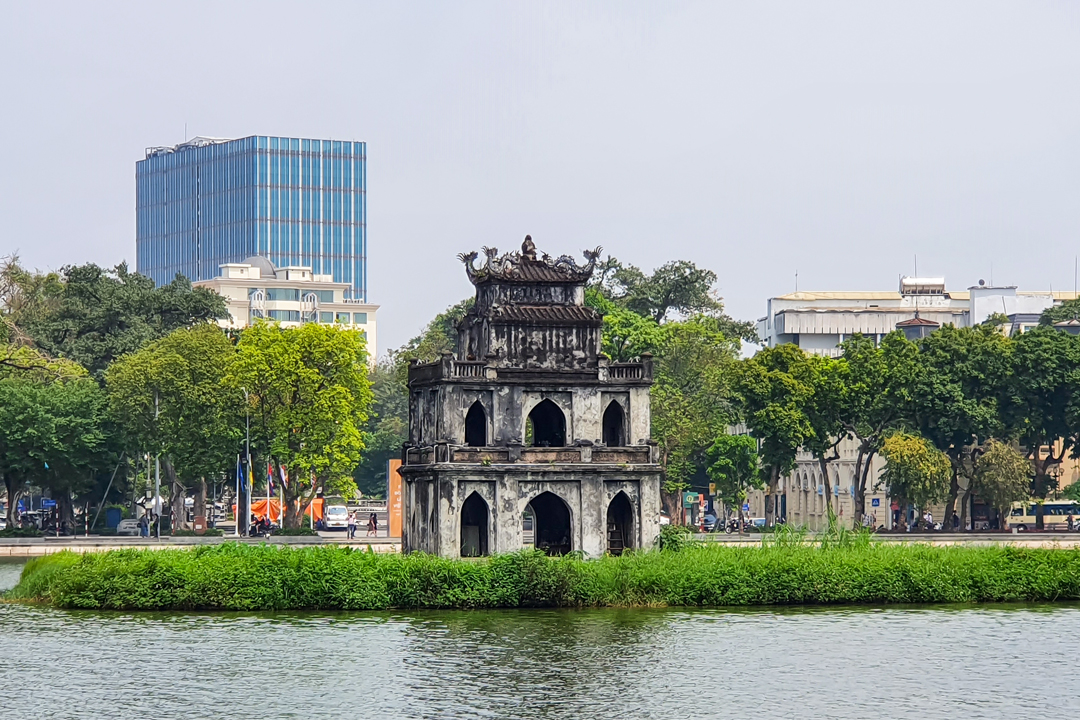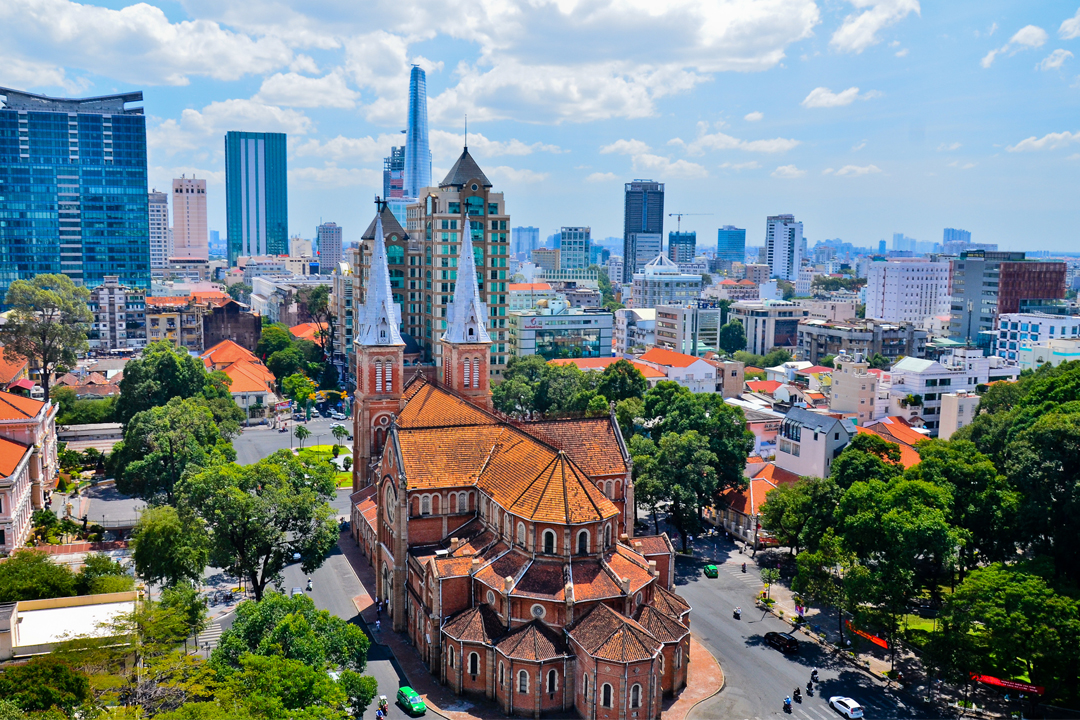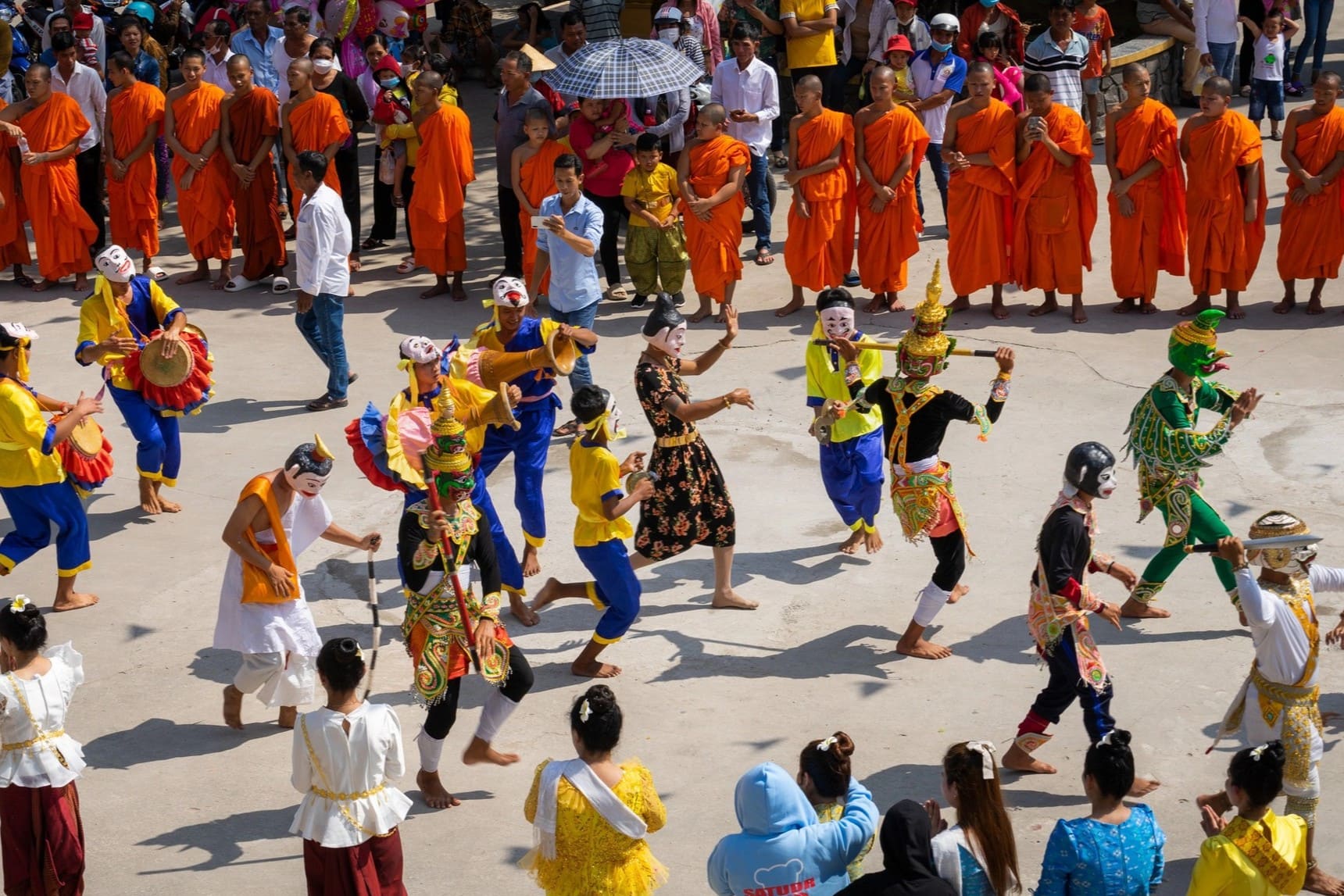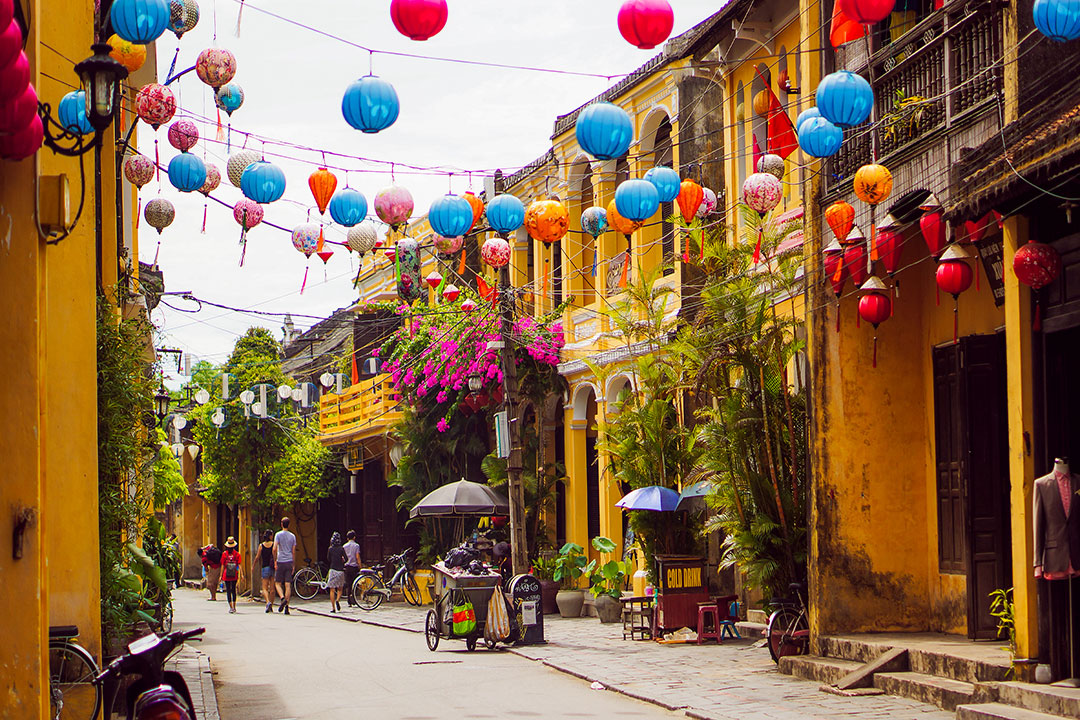Hoi An Ancient Town: History, Architecture, Things To See & Travel Guide
Nestled on the central coast of Vietnam, Hoi An Ancient Town is a living museum of history, culture, and architecture. Once a major Southeast Asian trading port, this charming riverside town flourished between the 15th and 19th centuries, attracting merchants from China, Japan, India, and Europe. Today, it stands as a UNESCO World Heritage Site, beloved for its perfectly preserved blend of cultural influences. The town's signature yellow-washed houses, wooden shopfronts, and narrow alleyways reflect a harmonious mix of indigenous and foreign elements.
In this comprehensive guide of GTrip, you'll uncover the stories behind Hoi An’s centuries-old landmarks, such as the Japanese Covered Bridge, the bustling night markets aglow with silk lanterns. You'll also find tips on what to do, where to go, and how to fully experience the town's unique rhythm. Hoi An invites you to slow down and savor every moment with ancient temples, riverside cafes, tailor-made fashion, or traditional street food like the legendary Cao Lau noodles.
History of Hoi An Ancient Town
Hoi An Ancient Town, nestled along the banks of the Thu Bon River in Quang Nam Province, unfolds a storied legacy shaped by centuries of cultural interchanges and thriving commerce. Known for its architectural splendor and vibrant cultural tapestry, Hoi An's historical evolution is remarkable for its transformation from a pivotal trading hub to a UNESCO World Heritage site. Understanding its history provides not only a window into the past but also context for the heritage it seeks to preserve today.
From trading hub to UNESCO site
The journey of Hoi An from a bustling trading port to a UNESCO World Heritage site is one of evolution and preservation. During the 15th to the 19th century, Hoi An emerged as a major international trading port in Southeast Asia. This era saw merchants from Japan, China, India, and Europe converge here, transforming the town into a cosmopolitan hub. Goods from various origins, including silk, ceramics, and spices, were traded in this vibrant market.
The town's strategic location near the South China Sea facilitated the exchange of not just commodities but also cultural values and architectural styles. Hoi An's partnership in the trading networks led to the construction of significant structures, such as the Japanese Covered Bridge and the Chinese Assembly Halls, which served both commercial and cultural purposes.
In 1999, recognizing its invaluable cultural and historical worth, UNESCO inscribed Hoi An Ancient Town as a World Heritage site. This designation was based on its well-preserved architecture and its role in showcasing a unique blend of cultural influences over the centuries.
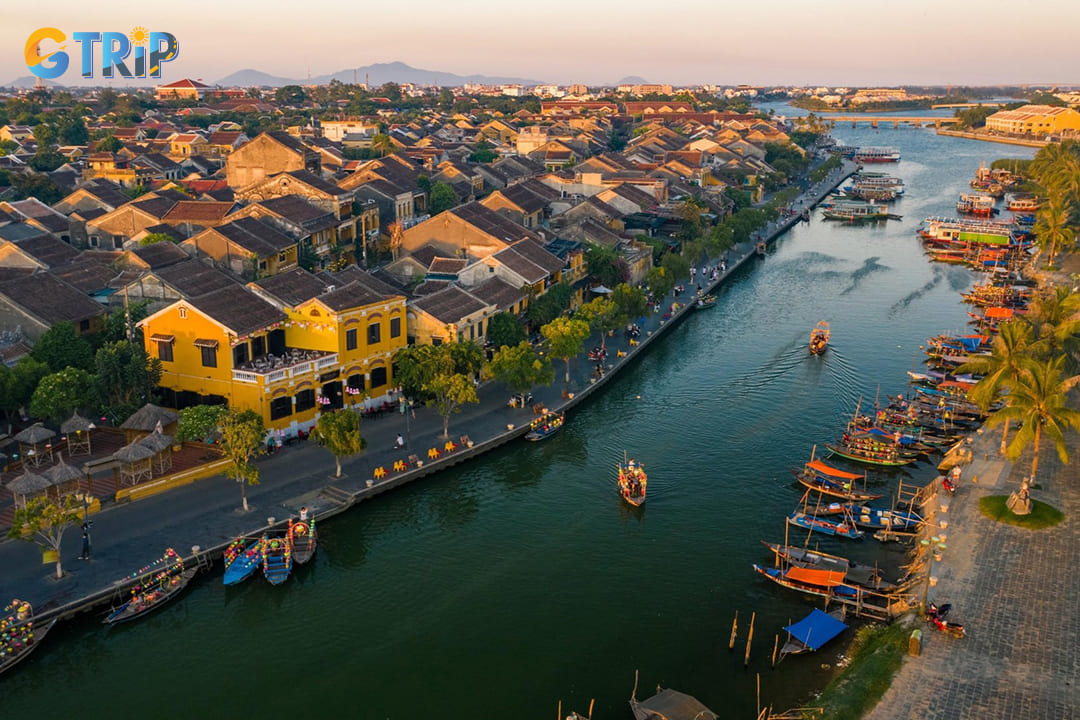
In 1999, recognizing its invaluable cultural and historical worth, UNESCO inscribed Hoi An Ancient Town as a World Heritage site
Historical significance and key periods
Hoi An's history can be divided into key periods, each marking significant developments that contributed to its current status. Initially, as a Champa Kingdom territory, it played a role in early regional exchanges. However, its prominence truly ascended when it became a hub during the early modern trading era.
The 16th and 17th centuries heralded the Golden Age of Hoi An, characterized by prosperous trade and multicultural encounters. Japanese, Chinese, and European traders established thriving communities, fostering a multicultural environment evident in the town's diverse architectural landscape. With the decline of the nearby Cham port of Da Nang, Hoi An retained its significance until the late 19th century, when river siltation led to its economic decline.
Today, Hoi An stands as a testament to the rich intercultural interactions of its past. These historical layers are preserved in its architecture and cultural practices, offering a glimpse into the life that was once led in this vibrant port.
Influence of the Maritime Silk Road
The Maritime Silk Road played a pivotal role in shaping Hoi An's history. As a key node in this extensive network, Hoi An facilitated the movement of goods, ideas, and people between East and West. The exchange along this route was not limited to tangible commodities; artistic and religious ideas also traversed these waters, enriching the cultures they influenced.
The architectural styles in Hoi An reflect the synthesis of diverse influences encountered via the Maritime Silk Road. The Japanese merchants constructed the iconic Japanese Covered Bridge as a representation of their cultural identity, while the Chinese built assembly halls that served as community centers and temples. These structures highlight the integration of different cultural elements that have come to define the aesthetic and historical fabric of Hoi An.
The historical narrative of Hoi An is intricately linked to the dynamics of the Maritime Silk Road. This connectivity facilitated not only economic prosperity but also multicultural enrichment, leaving lasting imprints on the town’s heritage.
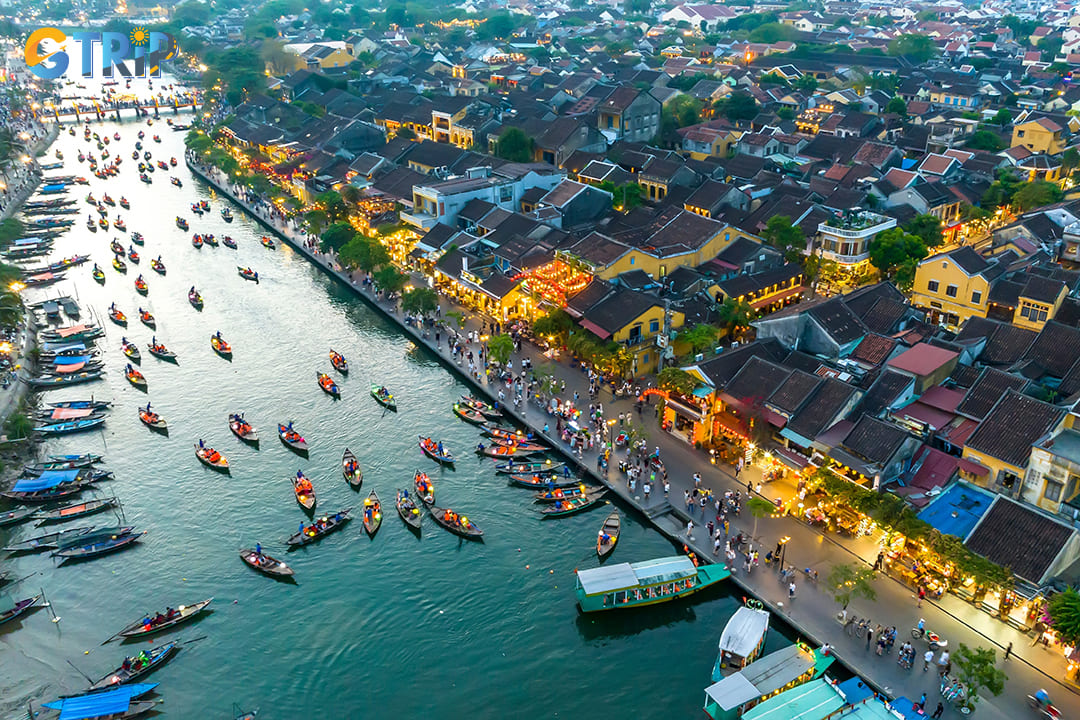
The Architectural styles in Hoi An reflect the synthesis of diverse influences encountered via the Maritime Silk Road
The unique architecture of Hoi An Ancient Town
Hoi An Ancient Town's architectural tapestry is a visual testament to its rich history and cultural amalgamation, resulting from centuries of interaction between diverse civilizations. Its architecture is an exemplary showcase of a harmonious blend of Vietnamese, Japanese, Chinese, and European influences, making it an extraordinary study for enthusiasts and scholars alike.
Japanese Covered Bridge: An iconic symbol
Among the quintessential elements of Hoi An's architectural landscape is the Japanese Covered Bridge (Chua Cau), a remarkable symbol of the town's multifaceted heritage. Constructed in the early 17th century by the Japanese community, this structure stands out with its classical Japanese architectural features, such as a curved roof and intricately carved wooden detailing. The bridge facilitated trade and also served as a cultural conduit, linking the diverse communities in Hoi An.
Its structural integrity, preserved over centuries, reflects traditional Japanese engineering techniques adapted to local conditions. The bridge, with its red lacquered facade and guardian sculptures, also symbolizes peace and goodwill between the Japanese and the local population. Its significance extends beyond functionality, embodying a shared history and cultural resonance that continues to captivate tourists.
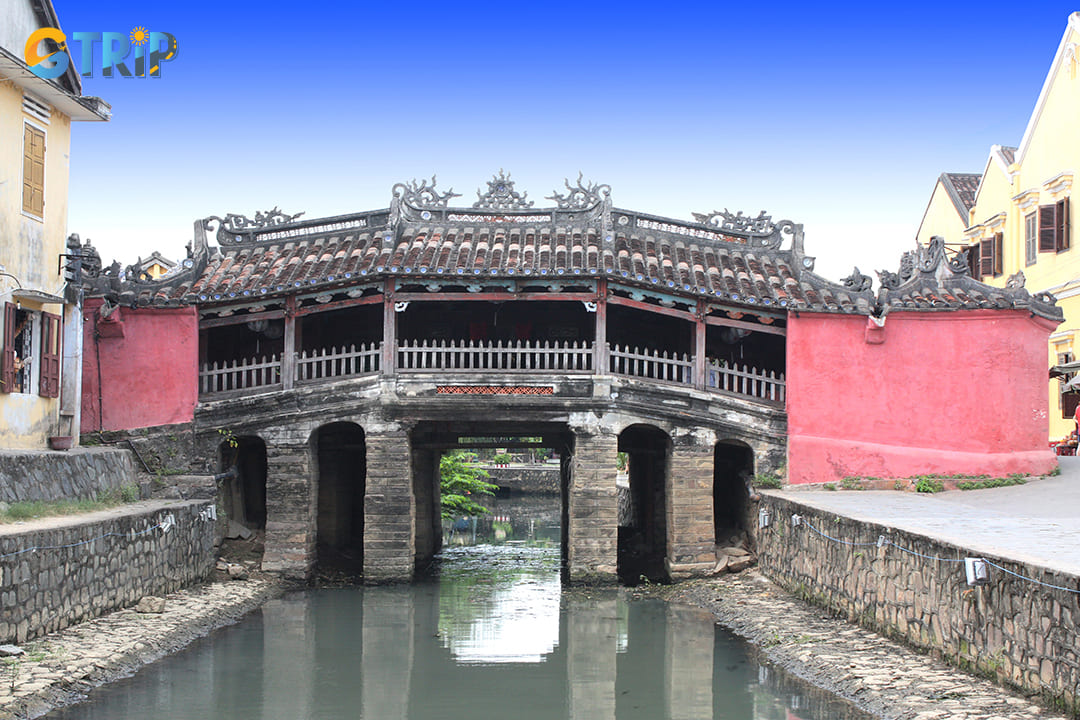
Among the quintessential elements of Hoi An's architectural landscape is the Japanese Covered Bridge
Chinese assembly halls: Cultural centers
Hoi An's Chinese assembly halls represent another facet of its unique architectural narrative. These halls, like the Fujian Assembly Hall (Hoi quan Phuc Kien) and the Cantonese Assembly Hall (Hoi quan Quang Dong), were built by various Chinese ethnic groups in Hoi An. They are not mere architectural structures but cultural epicenters where immigrants congregated, worshipped, and sustained their cultural identity.
Each hall showcases distinct architectural features emblematic of its originating community, such as sophisticated carvings, vibrant ceramics, and elaborately designed altars. The assembly halls are richly adorned with dragon motifs and murals that narrate historical and cultural stories, thereby reinforcing the town's cultural mosaic. Their presence underscores the influential role of Chinese communities in the socio-economic and cultural development of Hoi An.
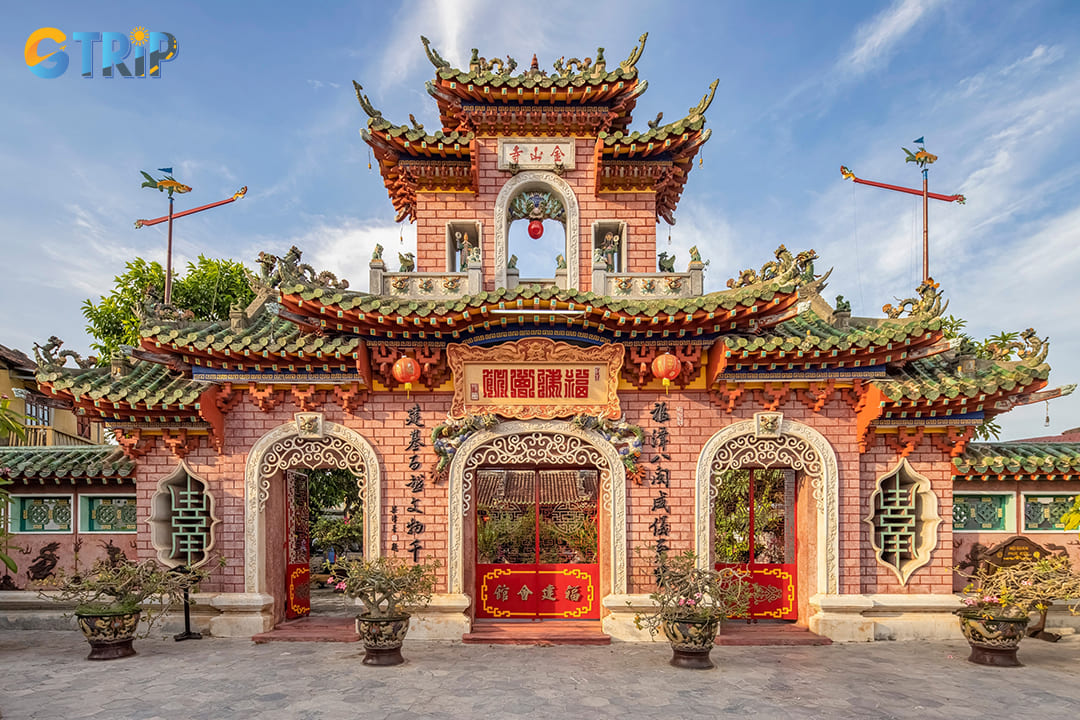
Hoi An's Chinese assembly halls represent another facet of its unique architectural narrative
Indigenous and colonial influences
Hoi An's architecture also eloquently narrates the story of indigenous resilience and colonial encounters. The indigenous Vietnamese architectural style is prominently seen in the town's traditional wooden houses, like the Tan Ky Old House (Nha co Tan Ky) and Phung Hung Old House (Nha co Phung Hung). These are characterized by their balance in yin and yang design principles, reflecting both aesthetic beauty and practical environmental adaptations.
The French colonial influence, although subtler, introduced elements such as stucco facades and spacious verandas, blending seamlessly with already existing styles. This amalgam results in a unique architectural hybridity, a canvas where layered histories and varied artistic expressions coexist.
Understanding Hoi An's unique architecture is to embark on a journey through time and space, delving into an era where the convergence of different cultures laid the foundation for a town that thrived on diversity. This rich architectural heritage enhances Hoi An's aesthetic value and speaks volumes about its historical significance, reflecting an intersection of global influences that shaped its identity. It invites each tourist to appreciate the diverse narratives sewn into its very fabric, ensuring Hoi An's continued allure and preservation as a treasured UNESCO World Heritage Site.
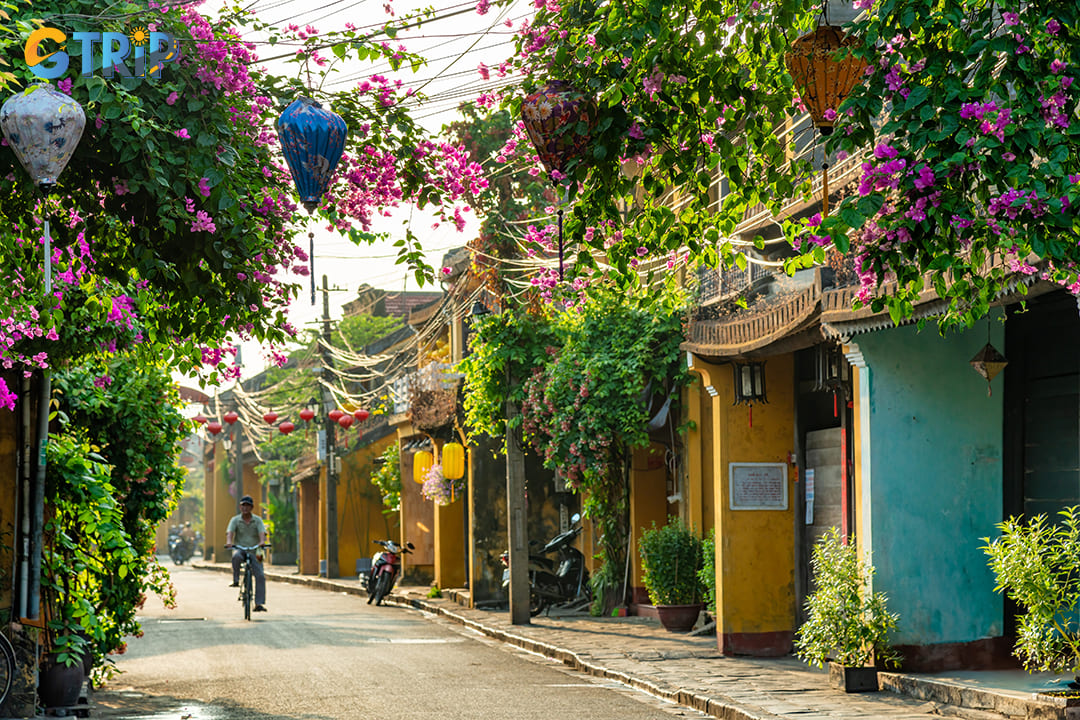
Hoi An's architecture also eloquently narrates the story of indigenous resilience and colonial encounters
Things to see in Hoi An Ancient Town
Hoi An Ancient Town, a beacon of cultural heritage, offers a plethora of attractions that showcase its rich history and vibrant culture. You can immerse yourselves in various experiences, each providing a unique glimpse into Hoi An's storied past and cultural diversity. Below, we delve into some of the must-see attractions.
Iconic historical sites
Hoi An Ancient Town is peppered with historical sites that reflect its past as a bustling international trading port. Among these, the Japanese Covered Bridge (Chua Cau) stands as a symbol of cultural fusion. Constructed in the early 17th century, this bridge is not merely a testament to Japanese architecture but also a representation of the town's international connections. Its beautifully carved wooden structure and the temple located at its midpoint remain highlights for tourists.
Equally important are the ancient houses, such as Tan Ky Old House and Phung Hung Old House, which exhibit the architectural amalgamation of Vietnamese, Chinese, and Japanese influences. These houses have been preserved through generations and provide a fascinating insight into the domestic life and commerce of historical Hoi An. Tourists are often captivated by the antique furniture, intricate woodwork, and well-preserved decorations.
Interactive museums and their offerings
Beyond standalone historical structures, Hoi An boasts interactive museums that provide a deeper understanding and context of its rich history. The Museum of Trade Ceramics is a treasure trove of artifacts that tell the story of Hoi An’s role in the Maritime Silk Road, displaying ceramics from countries such as China, Japan, and Thailand.
Meanwhile, the Museum of Sa Huynh Culture offers a journey into the ancient culture that resided in Hoi An, dating back over 2000 years. Archaeological findings, including burial jars and everyday utensils, paint a picture of life in the region long before its rise as a trading hub.
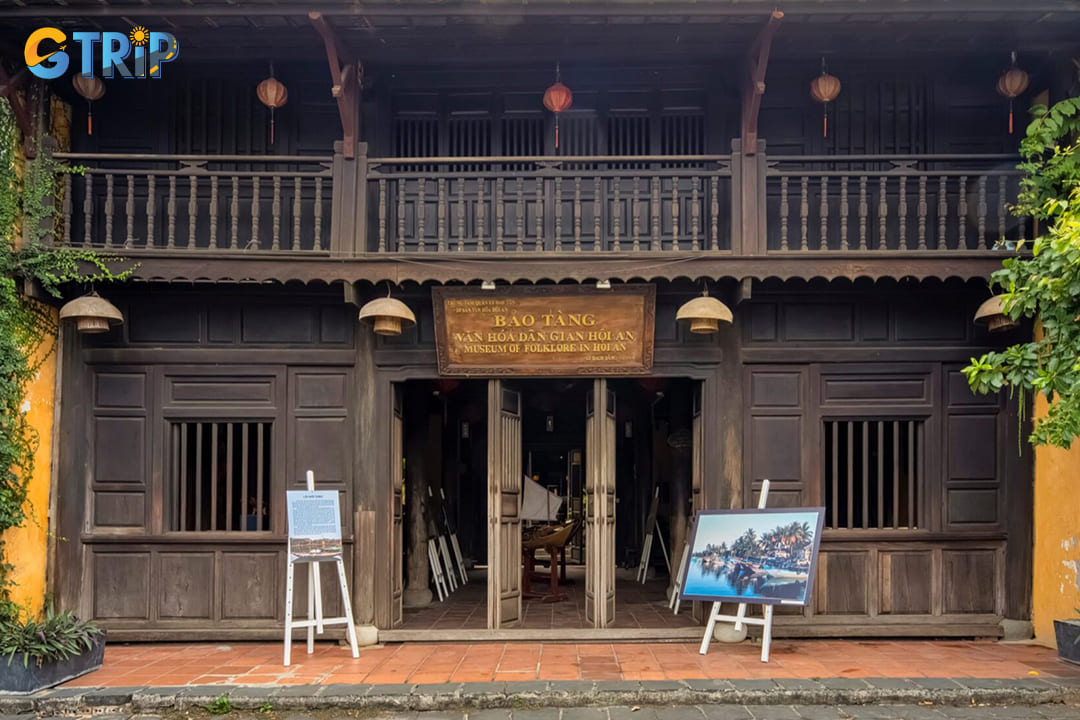
Beyond standalone historical structures, Hoi An boasts interactive museums that provide a deeper understanding and context of its rich history
Religious sites
Religion has played a vital role in shaping the cultural landscape of Hoi An. The town is home to several significant religious sites that serve as places of worship and also as cultural landmarks. The Quan Cong Temple (Chua Ong), dedicated to a revered Chinese general, is a stunning example of Chinese influence, adorned with statues, bells, and drums that symbolize bravery and loyalty.
Another site of religious and cultural importance is the Tran Family Chapel. Built in the early 19th century, this chapel is a tribute to the ancestors of the Tran family. It exemplifies the blend of Chinese, Japanese, and Vietnamese architectural styles and remains a testament to the familial piety deeply ingrained in Vietnamese culture. These religious and cultural sites offer you a serene environment to reflect on the history and customs that have shaped not just Hoi An, but its people and their way of life.
Experiencing Hoi An's enchanting evenings
Experiencing Hoi An's enchanting evenings promises an unforgettable journey through a landscape dotted with history and rich cultural vibrancy. As darkness descends, the town transforms into a luminous array of lights and vibrant sounds that captivate both locals and tourists alike. Here’s a guide to some of the enchanting experiences awaiting you in Hoi An after sunset.
The lantern festival: A vibrant tradition
One of the most mesmerizing events in Hoi An is its famed Lantern Festival. Held on the 14th day of each lunar month, this festival isn't just a celebration but a vivid embodiment of the town's cultural heritage. When the sun sets, the electricity is turned off, and the streets are illuminated by the warm glow of thousands of lanterns. Skilled artisans craft these lanterns using bamboo and silk, often painting them in traditional patterns that reflect Vietnam's rich folklore and spirituality.
During the festival, residents and tourists engage in a serene yet vibrant custom: floating paper lanterns down the Thu Bon River. Each lantern carries wishes and prayers, creating a vivid tapestry of colors on the water’s surface. This tradition isn't just a visual spectacle but also a moment of reflection, as the lanterns symbolize hope and new beginnings. The festival thereby serves both as a tourist attraction and a living showcase of Hoi An’s traditions.
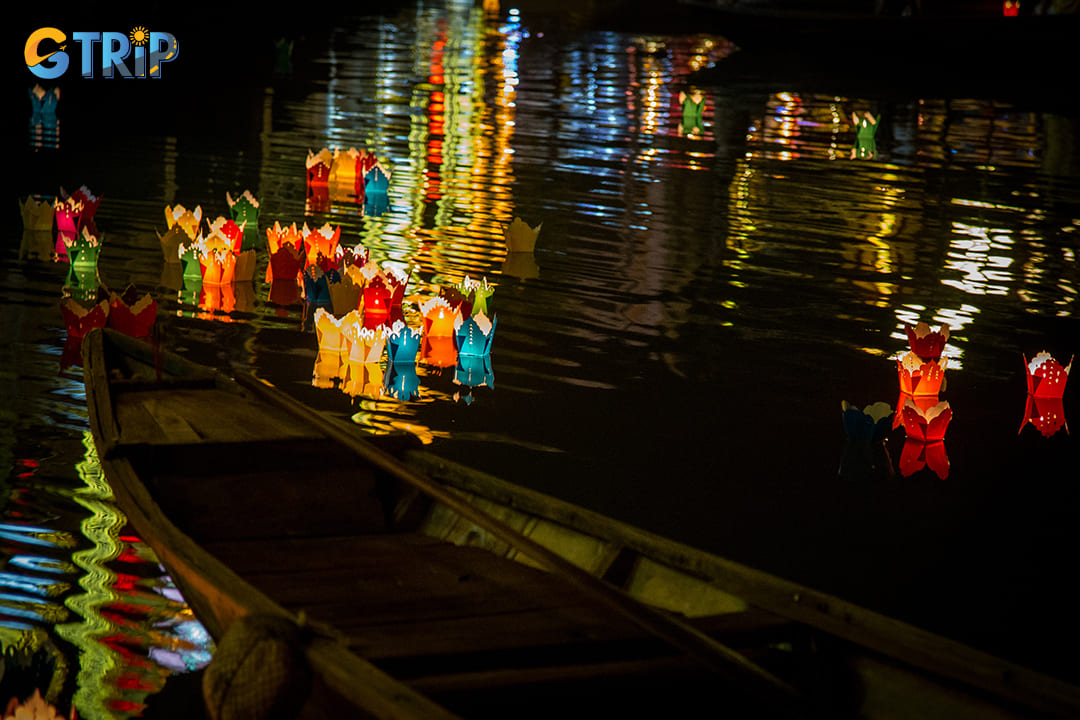
One of the most mesmerizing events in Hoi An is its famed Lantern Festival
Boat rides on the Thu Bon River
As evening sets in, taking a boat ride on the Thu Bon River offers both a tranquil and picturesque experience. Tourist boats often ply these waters, offering nighttime tours that provide a unique vantage point of the ancient town. The experience is enriched by the gentle sway of the boat as it moves through the water, while the twinkling lanterns from the town and other boats reflect off the water’s surface.
These boat rides aren’t just scenic, they’re an opportunity to engage with Hoi An’s storied past as a former trading port. Many guides sharing their boats have personal and familial connections to the river’s history, offering stories that bring the town’s past to life. Additionally, some rides include live traditional music, providing a sensory immersion into Vietnam’s cultural tapestry.
Atmospheric night markets
Hoi An’s night markets are a sensory-rich experience characterized by a bustling blend of sounds, sights, and scents. Located along Nguyen Hoang Street, the market is a haven for those looking to delve into the town's artisan crafts, local foods, and cultural artifacts. Stalls brimming with handcrafted souvenirs, silk goods, and intricate woodwork reflect the town’s dedication to preserving traditional crafts.
As you wander through the night market, you'll encounter a plethora of street food vendors offering mouthwatering local dishes. Savoring a plate of steamed dumplings or a bowl of mi quang noodles, while the market buzzes around you, offers a taste of the local culture. The market becomes an open-air event where you can enjoy traditional Vietnamese performances, stage shows, and even impromptu musical sessions that add to the vibrant atmosphere.
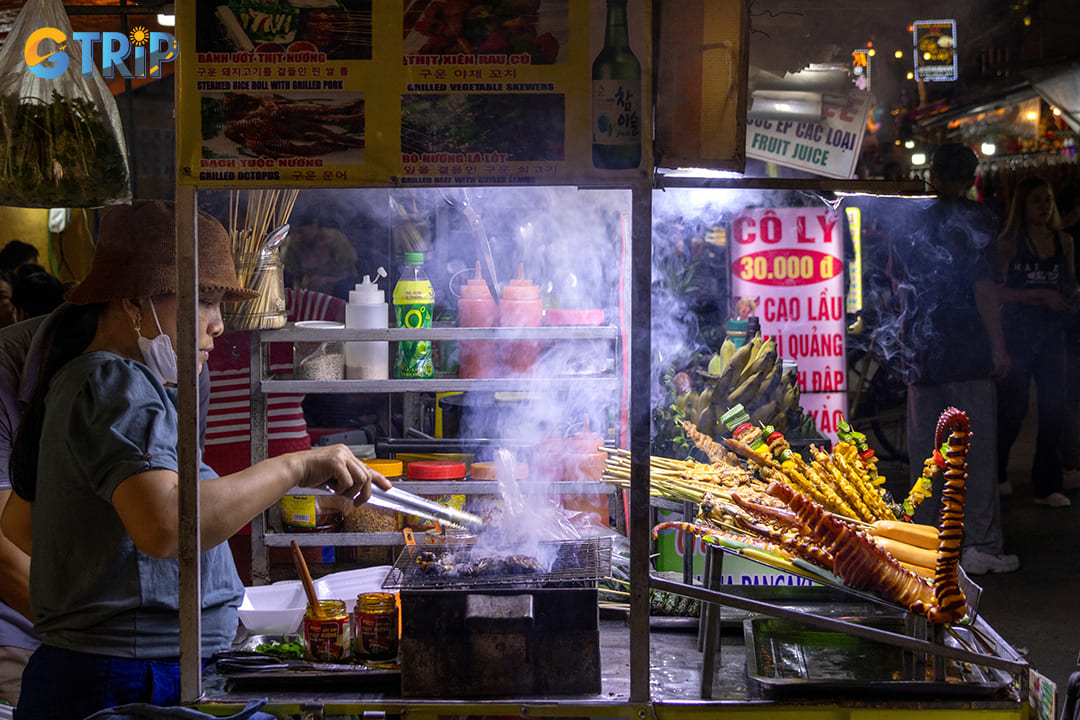
The night market is a haven for those looking to delve into the town's artisan crafts, local foods, and cultural artifacts
A culinary journey in Hoi An
As you venture into Hoi An, a paradise for food enthusiasts, an array of flavors awaits you, drawing from a rich tapestry of cultural influences. This culinary journey is as diverse as the town's architectural splendor, ranging from iconic dishes to lively markets. Each bite reveals a piece of Hoi An's history and cultural fusion, making it a must-experience for any tourist.
Savoring local dishes like cao lau
Cao lau stands as a culinary emblem of Hoi An, distinct from any other noodle dish across Vietnam. Originating from the Cham people, this dish reflects the blend of historical influences in Hoi An. To enjoy this specialty at its finest, make your way to the Central Market or local eateries such as Ba Be or Trung Bac Restaurant. The texture of the noodles, unique due to the lye water sourced from ancient Cham wells and wood ash from the nearby islands, is complemented by a tapestry of flavors. They are regional greens, slices of marinated pork, and nuanced soy sauce.
Key factors in savoring cao lau include:
- Authenticity: Ensure the noodles are genuinely sourced from Hoi An.
- Presentation: Traditional cao lau has minimal broth, focusing instead on the harmony of noodles, pork, and herbs.
- Locality: It's a dish deeply tied to Hoi An's environment, impossible to recreate elsewhere.
Street food and markets: An exploration
Hoi An's vibrant streets and markets serve as the beating heart of its culinary scene, where an exploration leads you to local specialties not found in traditional restaurants. Hoi An Night Market, particularly along Nguyen Hoang Street, bursts into life at night, filled with vendors serving a mosaic of tastes. From banh mi, renowned by outlets like Banh Mi Phuong, to the delicate white rose dumplings, Hoi An's street food is a study in culinary brevity and variety.
Reasons to explore street food and markets:
- Diversity of flavors: With influences from various cultures, the street food here is a melting pot of tastes.
- Local interaction: Sharing meals with locals offers an immersive experience seldom found in upscale dining.
- Economic variety: Street food offers affordable taste experiences compared to sit-down restaurant meals.

Cao lau stands as a culinary emblem of Hoi An, distinct from any other noodle dish across Vietnam
Cooking classes and culinary experiences
To immerse yourself completely in Hoi An's culinary arts, engaging in cooking classes enriches your understanding and appreciation of local cuisine. Many classes, such as those offered by Tra Que Village or Red Bridge Cooking School, provide a hands-on experience. Just start with a visit to the local market for fresh ingredients, and culminate in creating authentic dishes under expert guidance.
Benefits of participating in cooking experiences:
- Skill acquisition: Learning traditional cooking methods from local chefs.
- Cultural insight: Understanding the cultural significance behind each ingredient and dish preparation.
- Lasting memories: An interactive experience that provides not only a meal but an enriching story to take home.
In capturing the spirit of Hoi An through its flavors, this culinary journey uncovers a deeper appreciation for its cultural and historical richness. By exploring local dishes, street markets, and culinary classes, one not only tastes the essence of Hoi An but also becomes part of its enduring story.
Shopping and craftsmanship
Hoi An Ancient Town is renowned not only for its architecture and history but also for its vibrant shopping scene and exceptional craftsmanship. The town's rich trading history has given rise to a flourishing market for tailor-made clothing, bespoke leather goods, and intricate handicrafts. In this section, we explore the unique shopping and craftsmanship experiences that define Hoi An.
Discovering renowned tailor shops
Hoi An's tailor shops are legendary, drawing tourists from around the world seeking bespoke garments. The town boasts an impressive array of tailors, skilled in crafting custom-fit clothing within a remarkably short timeframe. Unlike conventional off-the-rack shopping, customers can select from a wide variety of fabrics and styles, collaborating with tailors to create personalized designs.
- Timeline: Most tailors in Hoi An can complete orders in just 24 to 48 hours, a testament to their efficiency and skill. This quick turnaround time makes it easy for tourists to receive custom garments even on short visits.
- Famous tailors: Some of the most renowned tailor shops include Yaly Couture, which is celebrated for its attention to detail and high-quality fabrics, and BeBe Tailor, known for its excellent customer service and precise tailoring. Customers often praise the seamless experience, from measurement to final fitting.
- Process: The process typically begins with a consultation where customers discuss their desired outfits with tailors. This is followed by selecting fabrics and taking measurements. Some tailors offer multiple fittings to ensure a perfect fit, allowing for adjustments after the initial construction of the garment.

Hoi An's tailor shops are legendary, drawing tourists from around the world seeking bespoke garments
Leather and handicraft treasures
Beyond clothing, Hoi An offers a fantastic selection of leather goods and handicrafts. The town's artisans employ traditional techniques handed down through generations, producing items that reflect both quality and cultural heritage.
- Leather goods: Hoi An's leather shops are famed for crafting high-quality bags, wallets, shoes, and belts. Stores like Friendly Shop and Da Bao Real Leather promise genuine leather and custom designs, making each piece unique.
- Handicrafts: You can also explore a rich variety of handicrafts, ranging from intricately carved wooden sculptures to hand-painted lanterns. The lanterns, a symbol of the town, are especially popular and come in various colors and sizes, perfect for souvenirs.
- Sustainable practices: Many artisans are adopting sustainable practices, using eco-friendly materials and techniques to minimize environmental impact. This not only supports the preservation of traditional crafts but also aligns with growing consumer demand for environmentally conscious products.
Souvenir shopping tips
Shopping for souvenirs in Hoi An can be a delightful experience, offering everything from traditional crafts to modern keepsakes. However, savvy shopping requires some tips to ensure quality and fair pricing.
- Bargaining: Haggling is common in Hoi An's markets and smaller shops. While many larger establishments have fixed prices, bargaining in smaller stalls can lead to significant discounts. A respectful approach is often well-received, and it’s common to start negotiations at around 30% lower than the initial asking price.
- Quality assurance: It is crucial to examine products carefully, ensuring that their quality matches the claims. With tailored garments and leather goods, checking seams and material quality is essential.
- Unique finds: Beyond clothing and handicrafts, the local market offers an assortment of spices, teas, and snacks that make excellent gifts. Hoi An Market is a buzzing spot where these goods can be found, alongside local specialties like Cao Lau sauce, giving a taste of the town.
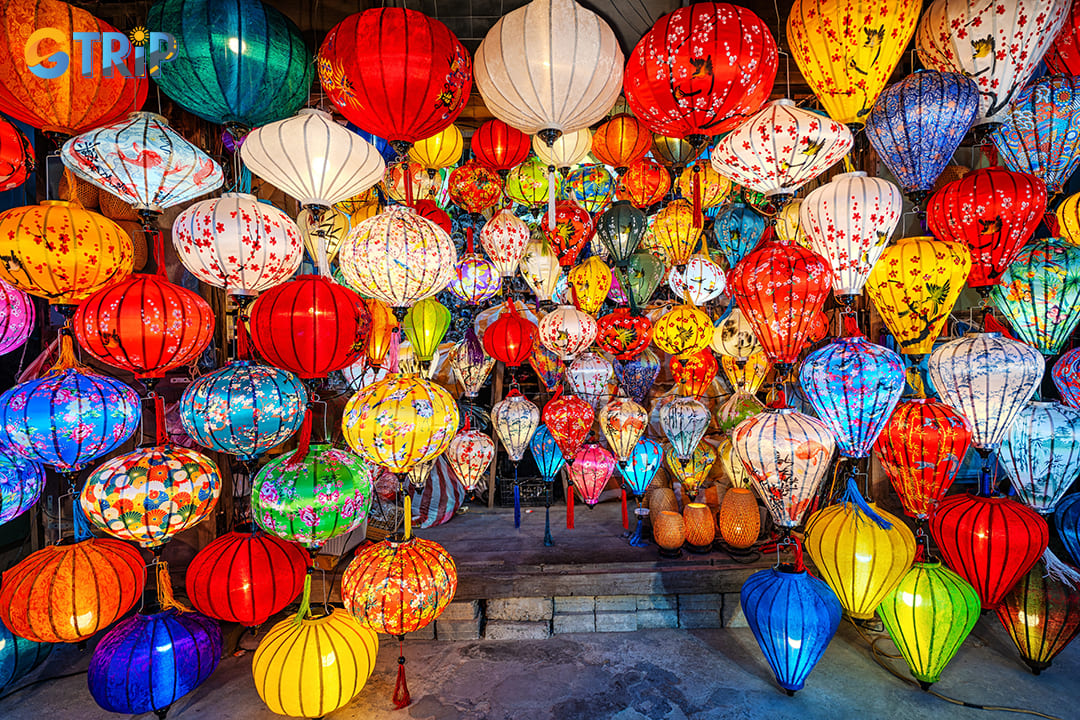
Shopping for souvenirs in Hoi An can be a delightful experience, offering everything from traditional crafts to modern keepsakes
Opening hours and entrance fees of Hoi An Ancient Town
Hoi An Ancient Town is open to visitors daily, with the town itself accessible 24 hours a day. However, specific attractions and ticket counters typically operate from 7:00 AM to 9:00 PM, with some closing earlier around 6:00 PM.
Entrance fees:
- General access: There is no entrance fee to stroll through the streets of Hoi An Ancient Town.
- Attractions: A ticket is required to visit specific sites like old houses, pagodas, and temples. The ticket costs approximately 120,000 VND (about $5.21) per person and includes access to five chosen heritage sites among 22 visitable locations.
Additional information:
- Vehicle restrictions: The town becomes pedestrian-only during certain hours to enhance the visitor experience.
- Ticket offices: These are open from 7:00 AM to 9:00 PM, though some may close earlier.
Besides, guided tours present another enriching way to engage with Hoi An's historical and cultural depth. Many licensed guides offer personalized tours, which can be tailored based on your interests, whether they lie in architecture, cuisine, or cultural history. Group tours are priced from around VND 200,000 (about $7.66) per person, whereas private options may cost more but provide a more intimate and tailored experience.
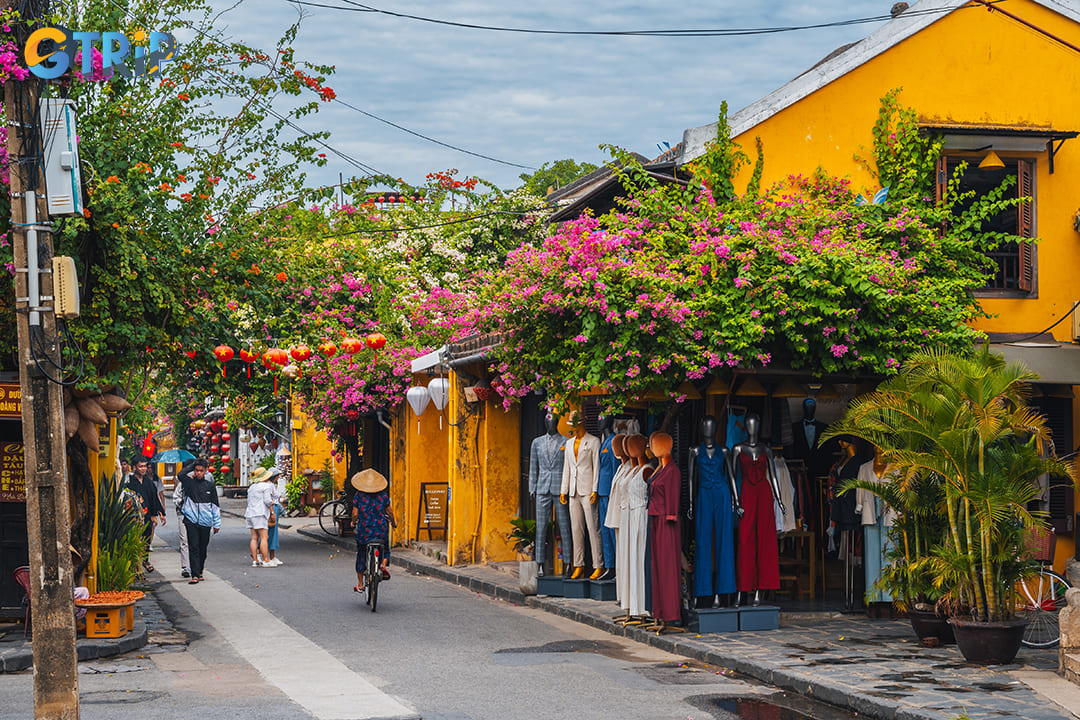
Hoi An Ancient Town is open to visitors daily, with the town itself accessible 24 hours a day
Best time and how to reach Hoi An
To fully appreciate Hoi An Ancient Town, a thorough understanding of logistical details is necessary for a smooth visit. This section provides essential information for planning your trip.
Best time to visit Hoi An
Choosing the right time to visit Hoi An can significantly impact your experience. The town offers a climate divided broadly into dry (February to July) and rainy seasons (August to January). The ideal months to plan your visit are between February and April, when the weather is pleasantly cool and rainfall is minimal. The period avoids the sweltering summer heat, as well as the monsoon downpours, ensuring optimal conditions for sightseeing and exploration.
How to reach Hoi An Ancient Town?
Reaching Hoi An is a convenient process for international and domestic travelers. The nearest airport is in Da Nang, approximately 30 kilometers away. From Da Nang International Airport, you can choose from several modes of transport:
- Private car/taxi: Approximately 45-minute drive, priced between VND 300,000 to VND 500,000.
- Shuttle bus: Operated by many travel companies offering Hoi An tours, ticket prices range from 120,000 to 150,000 VND.
- Motorbike rental: For the adventurous, ride a motorbike for around VND 150,000 per day.
Each option offers different benefits, allowing travelers to choose based on convenience, budget, and comfort.
Once in Hoi An, optimizing your time through effective navigation is crucial to maximizing your experience. The best way to explore the ancient town's charming streets and narrow alleys is on foot. This provides a leisurely and environmentally friendly way of absorbing its beauty and also aligns with the preservation efforts aimed at maintaining its cultural integrity.
For those seeking an alternative, bicycles are widely available for rental at costs starting from VND 20,000 to VND 50,000 ($0.77 - $1.92) per day. Bicycles offer a relaxed yet efficient way to cover more ground, extending your exploration to nearby areas such as An Bang Beach. In the evenings, when the temperatures drop and the streets come alive with the glow of lanterns, a stroll along the Thu Bon River is particularly enchanting. You may also consider renting a small boat for a different perspective of the town's waterfront.
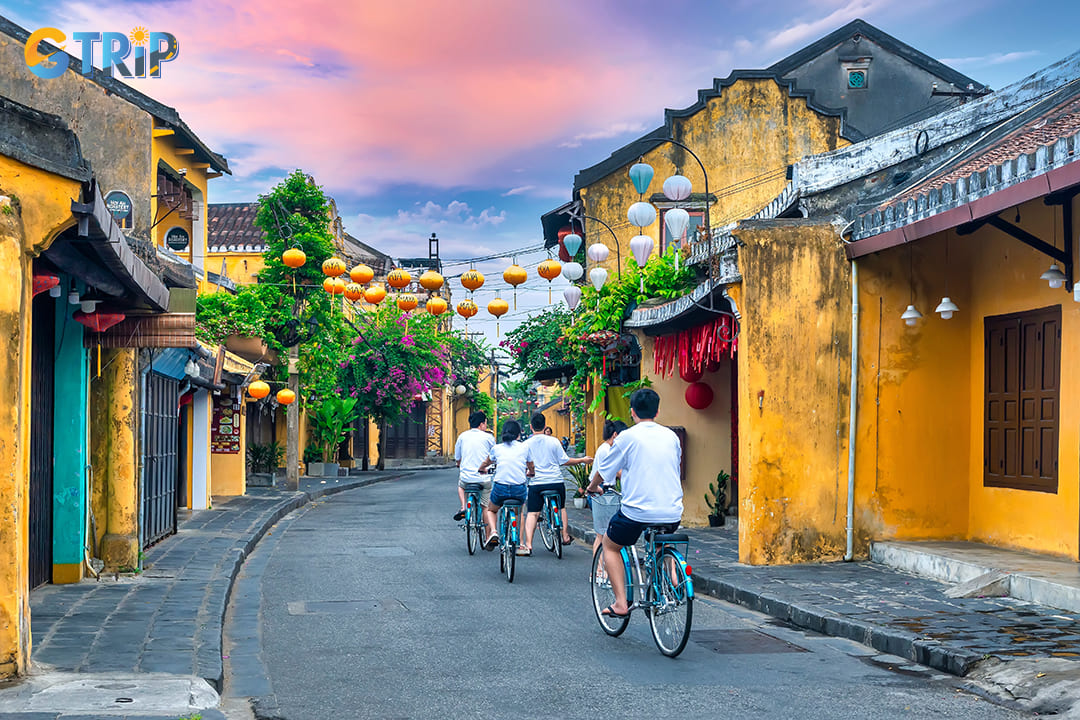
You can explore Hoi An Ancient Town by bicycle
Beyond Hoi An's walls: Day trips and nature
Nestled in the heart of Quang Nam province, Hoi An Ancient Town offers more than just historic wonders within its walls. Venture beyond the town’s iconic yellow facades to discover an array of natural landscapes and cultural experiences that promise to enrich any visit.
Visiting nearby beaches: Cua Dai and An Bang
Just a short drive from the bustle of Hoi An lies the serene shores of Cua Dai and An Bang Beaches. Cua Dai, known for its white sandy stretch and coconut palms, provides a tranquil escape where you can unwind and enjoy the coastal atmosphere. The beach offers various amenities, including local seafood restaurants where one can savor fresh catch while basking in the sea breeze. However, due to natural erosion, certain areas of Cua Dai have been affected, necessitating ongoing conservation efforts to preserve its beauty.
An Bang Beach, on the other hand, has gained popularity among both locals and tourists for its laid-back vibe and clearer waters. This beach remains relatively untouched by commercial development, making it ideal for those seeking a more pristine setting. An Bang also provides a range of activities such as surfing, paddleboarding, and even yoga classes right on the sand. The beach's informal eateries and bars offer a taste of local cuisine for those wishing to dine with an ocean view.

Cua Dai provides a tranquil escape where you can unwind and enjoy the coastal atmosphere
Exploring the countryside by bicycle
Hoi An’s surrounding countryside is a tapestry of lush rice paddies, winding rivers, and quaint villages waiting to be explored. Bicycle tours offer a sustainable and intimate way to experience these rural landscapes. Along the paths, travelers can witness the daily rhythms of Vietnamese rural life, from farmers tending their fields to locals practicing traditional fishing techniques.
One popular route takes tourists through the picturesque Cam Kim Island, just a short ferry ride from the town. Here, the simplicity of village life invites exploration of crafts such as boat building and carpentry. Another rewarding trail leads through Tra Que Herb Village, where lush gardens showcase organic farming methods. Participants can even learn and partake in planting and harvesting, cultivating a deeper appreciation for the region's sustainable agriculture.
Eco-tours and traditional villages
Beyond its visual splendor, Hoi An’s environs boast a cultural richness preserved in the traditional villages that dot the landscape. Eco-tours provide immersive experiences, combining nature appreciation with cultural interactions. One notable destination is the Cam Thanh Coconut Village, situated just south of Hoi An. Here, guided boat tours navigate the estuarine ecosystem of nipa palms, offering insights into diverse wildlife and the traditional fishing practices of local communities.
A visit to the Kim Bong Carpentry Village reveals the intrinsic craftsmanship that Hoi An is known for. This village, historically significant for providing woodwork for the ancient town, now welcomes tourists to observe artisans as they craft intricate designs from wood using age-old techniques. Moreover, the pottery village of Thanh Ha offers interactive workshops where you can try your hand at molding clay into traditional household items. Therefore, you can gain an understanding of the craft that contributed to Hoi An’s trade history.

One notable destination is the Cam Thanh Coconut Village, situated just south of Hoi An
Understanding and supporting conservation
Hoi An Ancient Town, recognized as a UNESCO World Heritage site in 1999, offers more than just scenic beauty and historical intrigue. Its conservation lays the foundation for ongoing cultural preservation and sustainable development. The key to understanding this effort lies in grasping the roles of its community, sustainable tourism practices, and the challenges that lie ahead.
Role of the community in preservation
The local community plays an instrumental role in Hoi An's conservation. Residents actively participate in maintaining the town's heritage, fostering a sense of ownership and pride. They engage in cultural events, participate in restoration projects, and pass down traditional crafts to younger generations. This involvement is crucial because it ensures that conservation is rooted in the community, rather than imposed from external forces.
- Cultural transmission: Local artisans and craftsmen continue to produce traditional goods and share their skills with apprentices, keeping the cultural heritage alive.
- Community engagement: Events such as festivals and communal gardening involve locals in activities that highlight and celebrate their shared history.
- Participatory governance: Local governance in Hoi An frequently involves community input, ensuring that development respects cultural traditions and values.
Sustainable tourism practices
Sustainable tourism is another pillar supporting Hoi An's conservation efforts. Tourism in Hoi An is managed in a manner that aims to minimize its ecological footprint while maximizing benefits to the local community.
- Eco-friendly initiatives: Initiatives like bike-sharing programs reduce carbon footprints, and waste management campaigns aid in keeping the town clean.
- Visitor education: Programs educate visitors about cultural sensitivity and encourage respect for the local way of life, which helps preserve the town's authenticity.
- Revenue sharing: Proceeds from entrance fees are reinvested into maintenance and development projects, ensuring that tourism directly benefits heritage conservation.
Future challenges and prospects
Despite robust community involvement and sustainable strategies, Hoi An faces ongoing challenges. Rising tourist numbers put pressure on infrastructure and resources, risking the town’s delicate balance between preservation and development.
- Urban development pressure: Rapid urban expansion can threaten historical sites if not managed carefully, especially as surrounding areas develop.
- Climate change impact: The town's proximity to rivers and its low elevation make it vulnerable to flooding and rising sea levels, calling for adaptive measures.
- Infrastructure strain: Increasing tourist demand requires expansion of infrastructure, which must be balanced with conservation efforts to avoid heritage site degradation.
Supporting Hoi An’s conservation means empowering the community, promoting sustainable tourism, and tackling challenges with innovative solutions. These components together ensure that Hoi An remains not just an attraction, but a living cultural treasure. Effective conservation safeguards its historical legacy for future generations, balancing preservation with the town's natural growth and tourist appeal.
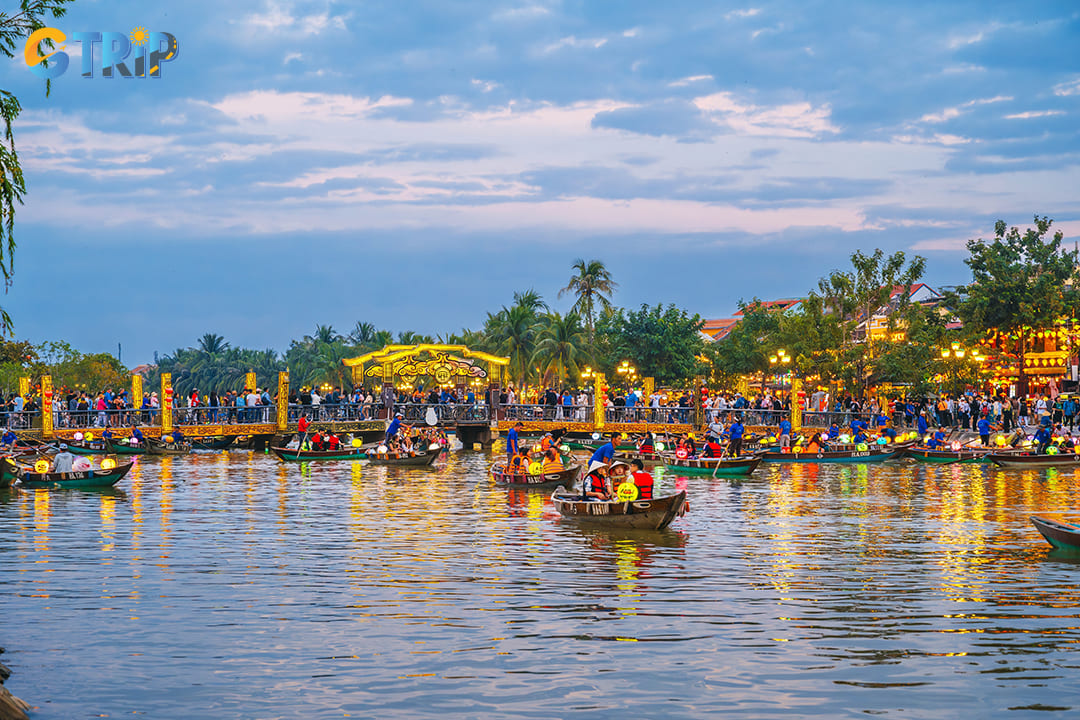
Hoi An Ancient Town, recognized as a UNESCO World Heritage site in 1999, offers more than just scenic beauty and historical intrigue
Hoi An Ancient Town is more than just a beautiful place, it's a journey through time, culture, and tradition. Every moment in Hoi An leaves a lasting impression, from its centuries-old architecture to its flavorful dishes and warm-hearted locals. If you're ready to explore this timeless gem in the most authentic way, join a Hoi An Tour by GTrip - Vietnam Travel Agency. Let local experts guide you through hidden corners, culinary highlights, and cultural treasures that make Hoi An truly unforgettable.

